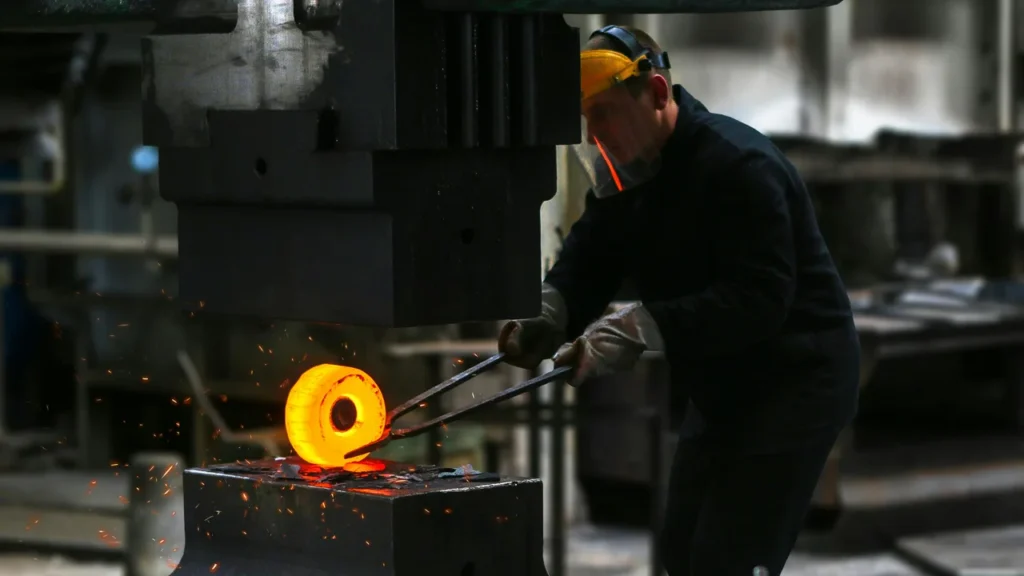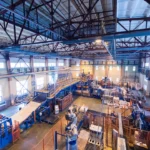Additive manufacturing has emerged as one of the most revolutionary developments in modern industry. Commonly known as 3D printing, this technology enables manufacturers to build parts layer by layer directly from digital designs—eliminating the need for molds, dies, or extensive machining. By merging digital innovation with material science, additive manufacturing allows rapid prototyping, custom production, and sustainable manufacturing all within the same process.
Understanding Additive Manufacturing
At its core, additive manufacturing is a process of creating three-dimensional objects by adding material incrementally rather than removing it, as in conventional methods such as cutting or milling. The concept might seem simple, but its impact on production efficiency, cost, and design freedom is profound. Industries ranging from aerospace and automotive to healthcare are now embracing this technique to streamline their workflows and achieve unprecedented design precision.
Unlike traditional subtractive processes, additive manufacturing uses computer-aided design (CAD) data to deposit material precisely where it’s needed. The result: reduced waste, faster prototyping, and components optimized for performance rather than manufacturability. As described by 3D Printing Industry, the global shift toward digital production has made additive technologies a central pillar of Industry 4.0.
The Evolution of 3D Printing
The story of 3D printing began in the 1980s, when engineers first experimented with stereolithography to build small prototypes. These early systems were primarily used for rapid prototyping—helping designers visualize products before mass production. Over the decades, advances in materials, software, and automation have transformed these simple printers into industrial-grade machines capable of producing high-strength metal and composite components.
Today, additive manufacturing is no longer confined to the lab. Aerospace companies use it for lightweight turbine blades, while medical specialists print custom implants and prosthetics. Even construction firms are adopting large-format printers to fabricate concrete structures on-site, signaling the dawn of a new manufacturing era.
How Additive Manufacturing Works

Despite its technical sophistication, the additive manufacturing workflow follows a straightforward sequence:
- Design Creation: Engineers start with a CAD model that defines geometry and dimensions.
- File Preparation: Specialized software slices the 3D model into thin layers, generating a toolpath for material deposition.
- Printing Process: The printer deposits or fuses material layer by layer, using methods such as extrusion, laser sintering, or photopolymerization.
- Post-Processing: The finished part undergoes cleaning, surface finishing, and inspection before functional use.
Each stage of the process is digitally controlled, ensuring accuracy down to micrometer levels. Combined with automation and robotics, additive manufacturing provides consistent results with minimal human intervention—ideal for both prototyping and serial production.
Materials Used in Additive Manufacturing
The versatility of additive manufacturing lies largely in its diverse range of materials. The most common include:
- Plastics: Thermoplastics such as ABS and PLA dominate consumer and design applications.
- Metals: Titanium, aluminum, and Inconel alloys are used for high-performance industrial parts.
- Ceramics: Employed for medical implants and heat-resistant components.
- Composites: Fiber-reinforced polymers offer lightweight strength ideal for aerospace structures.
Material scientists continue to develop advanced powders and resins to improve durability and heat tolerance. The ability to print with multiple materials in one process is unlocking complex, multi-functional products that traditional methods simply cannot achieve.
From Rapid Prototyping to Industrial Production
In its early years, 3D printing was primarily used for rapid prototyping—creating visual and functional models before mass production. Engineers could design, print, test, and modify components in days instead of weeks, significantly accelerating product development cycles. This agility gave companies a competitive advantage by shortening the time between concept and market launch.
Today, additive manufacturing has moved far beyond prototypes. Industrial-grade printers produce fully functional components that meet stringent performance and safety requirements. In the automotive sector, manufacturers print tooling, molds, and even final car parts. Aerospace engineers fabricate complex jet-engine nozzles that reduce fuel consumption, while medical professionals use biocompatible materials to produce personalized implants for patients.
Advantages of Additive Manufacturing
The widespread adoption of additive manufacturing stems from several compelling advantages:
| Benefit | Description |
|---|---|
| Design Freedom | Allows creation of geometries impossible with traditional machining. |
| Material Efficiency | Uses only the required amount of material, minimizing waste. |
| Speed | Rapid prototyping reduces product development time dramatically. |
| Customization | Enables production of parts tailored to specific users or functions. |
| Sustainability | Lower carbon footprint and potential for recyclable inputs. |
These benefits explain why industries are investing heavily in research and integration of additive systems within their existing manufacturing lines. The shift toward digital fabrication isn’t just a trend—it’s a fundamental evolution redefining how products are conceived and produced.
Challenges and Limitations of Additive Manufacturing
Despite its advantages, additive manufacturing still faces a few hurdles that slow its universal adoption. One of the most notable is the cost of industrial-grade equipment and materials. While desktop 3D printers are affordable, high-end metal printers and advanced resin systems remain expensive, limiting accessibility for smaller manufacturers.
Another major challenge is ensuring consistency and quality control. Because 3D printing creates objects layer by layer, any variation in temperature, alignment, or material feed can affect the integrity of the final product. For industries like aerospace or healthcare, where safety and precision are critical, even microscopic imperfections can disqualify a printed component.
Overcoming Industrial Challenges
Manufacturers and researchers are actively addressing these limitations. Standardization and certification processes are being established to ensure uniform quality across the industry. Automation in post-processing—such as surface finishing and dimensional inspection—is also reducing manual labor costs. Furthermore, as new materials are developed and printer prices decline, additive manufacturing is becoming increasingly viable for mass production.
Hybrid manufacturing, which combines additive and traditional subtractive methods, represents another promising solution. By 3D printing a near-net shape and then machining it to final tolerance, companies can achieve both design freedom and high precision. This integrated approach is rapidly redefining industrial production workflows.
Industrial Applications of Additive Manufacturing
The applications of additive manufacturing now extend across virtually every sector of modern industry. Below are some of the most impactful examples:
Automotive Industry
Car manufacturers have embraced 3D printing for lightweight components, customized tools, and rapid prototyping. Companies like BMW and Ford utilize additive methods to design more efficient cooling systems and engine components, reducing overall vehicle weight and fuel consumption. Rapid prototyping enables engineers to test multiple iterations in days instead of months.
Aerospace and Defense
Aerospace companies were among the first to adopt additive manufacturing for mission-critical parts. Jet engine fuel nozzles, turbine blades, and structural brackets are now routinely printed using titanium and nickel alloys. These parts are not only lighter but also stronger due to optimized internal geometries that traditional manufacturing could never achieve.
Healthcare and Medical Devices
In the medical field, additive manufacturing has opened new horizons for personalized healthcare. Surgeons use patient-specific 3D models for surgical planning, while dental labs and prosthetic manufacturers print implants perfectly tailored to each individual. Bioprinting, though still in development, has already shown promise in creating tissue scaffolds and regenerative medicine applications.
Construction and Architecture
Large-scale 3D printing technologies are transforming how buildings are designed and constructed. Concrete printers can fabricate entire housing units directly on-site, reducing material waste and labor costs. This approach allows for sustainable and affordable housing solutions, particularly in developing regions.
Advantages Beyond Production
While additive manufacturing is often praised for its design freedom and speed, its strategic benefits extend further. By localizing production, manufacturers can minimize logistics and transportation emissions. Digital inventories replace physical warehouses, as spare parts can be printed on demand anywhere in the world.
This shift toward distributed manufacturing also enhances supply chain resilience. Instead of relying on centralized factories, companies can maintain smaller, flexible facilities close to their customers—an approach that proved invaluable during global disruptions such as the COVID-19 pandemic.
Innovations Shaping the Future
The future of additive manufacturing looks increasingly sophisticated, driven by innovations in design, software, and material science. Below are key trends shaping the next decade of industrial 3D printing:
- AI-Driven Design: Artificial intelligence and generative design tools are enabling engineers to create complex geometries optimized for weight, strength, and thermal performance.
- Multi-Material Printing: Advanced systems can now print with multiple materials simultaneously, creating components with integrated electrical, thermal, and mechanical functions.
- Automation and Robotics: Fully automated print farms are emerging, capable of 24/7 production with minimal human oversight.
- Sustainability Initiatives: Recyclable materials and closed-loop systems are making additive processes more environmentally responsible.
Integration with Smart Manufacturing
As factories evolve toward Industry 4.0 standards, additive manufacturing integrates seamlessly with other digital technologies. IoT sensors monitor real-time production data, while blockchain ensures traceability of materials. Cloud-based platforms enable remote collaboration, design sharing, and production management from anywhere in the world.
Economic and Environmental Benefits
The economics of 3D printing are transforming global manufacturing models. Reduced tooling costs, faster design cycles, and localized production all contribute to lower total manufacturing expenses. For startups and small businesses, this democratization of production removes traditional barriers to entry, allowing innovation to thrive.
From an environmental standpoint, additive manufacturing contributes to sustainability through material efficiency and energy savings. By using only the necessary material, waste is reduced by up to 90% compared to subtractive methods. Lightweight structures decrease fuel consumption in transportation and aerospace sectors, supporting broader efforts toward carbon neutrality.
The Future Outlook of Additive Manufacturing
As technology matures, additive manufacturing will transition from a complementary technique to a dominant mode of production. With continued advances in speed, scalability, and cost reduction, large-scale factories are expected to incorporate 3D printing as a central element of their manufacturing strategies.
Experts predict that within the next two decades, on-demand production networks will replace many traditional supply chains. This evolution will not only make manufacturing more efficient but also more sustainable and resilient. For businesses willing to invest early, additive manufacturing offers a clear competitive edge and a pathway to innovation-led growth.
Conclusion
Additive manufacturing has already redefined how products are imagined, designed, and built. What began as rapid prototyping has evolved into a transformative force shaping the future of industrial production. Its ability to merge creativity, efficiency, and sustainability positions it as a cornerstone of modern manufacturing.
As industries embrace this paradigm shift, the line between design and production continues to blur. From aerospace components to custom medical implants, additive manufacturing stands at the forefront of the fourth industrial revolution—turning digital ideas into tangible, functional reality.



